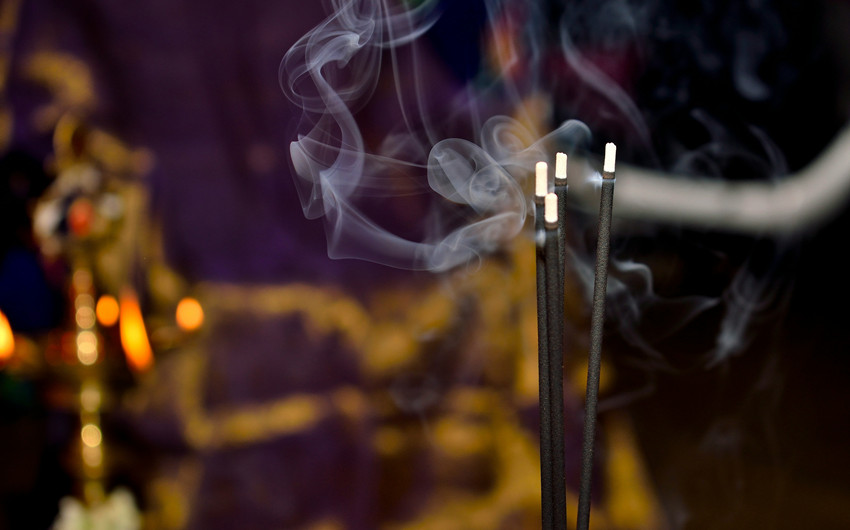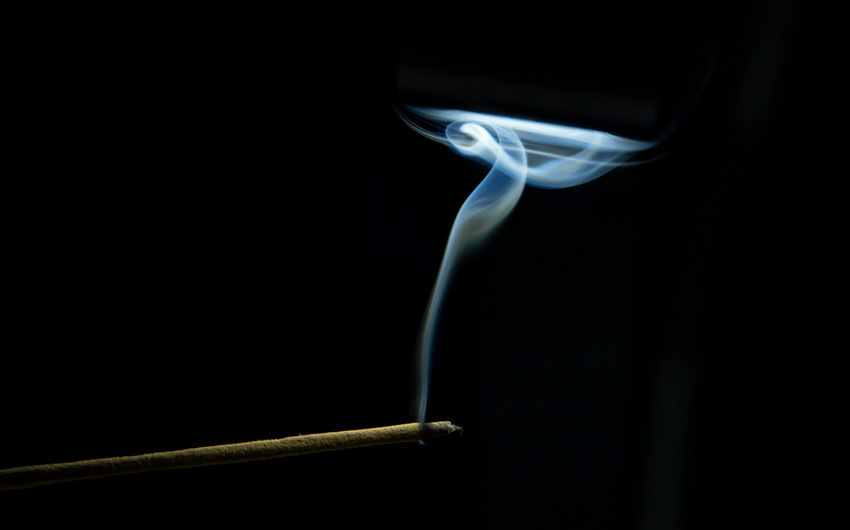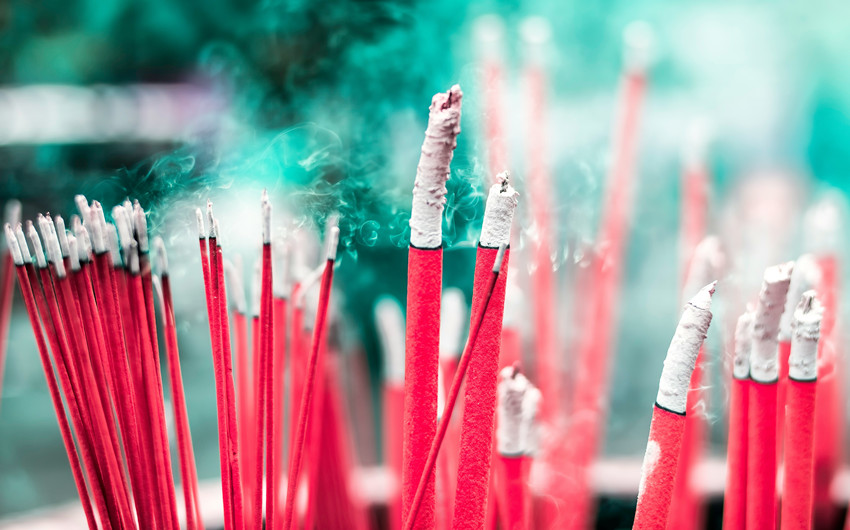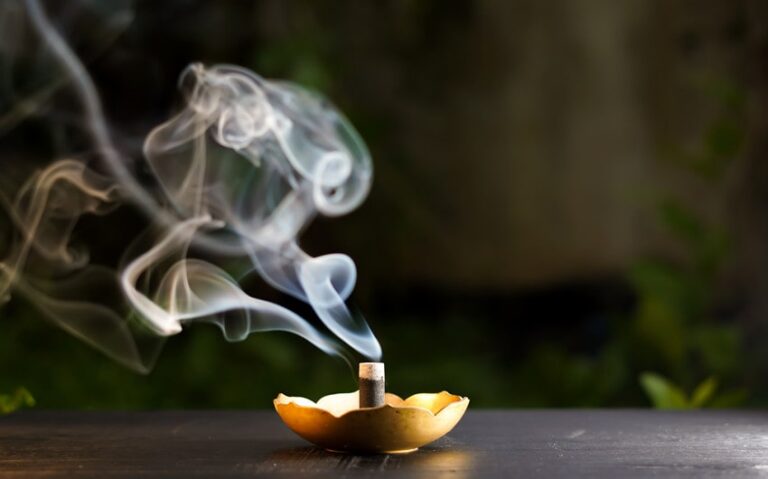Incense Smoke Meaning: Spiritual Significance and Interpretations
Incense has been used for centuries in rituals, meditation, and creating calming environments. Whether you’re burning it to relax or during spiritual practices, the rising smoke can carry deeper meanings. Many believe that the way the smoke moves or lingers can offer insight into energy, emotions, or even messages from beyond.
Understanding the incense smoke meaning adds another layer to the experience, making it more than just a pleasant scent. It’s about connection, intention, and symbolism that can resonate with your personal journey and surroundings. Let’s dive into the fascinating interpretations behind those wafts of smoke.
The Historical and Cultural Significance of Incense Smoke
Incense has played an essential role in many cultures throughout history, serving both practical and spiritual purposes. Its use can be traced back thousands of years, with ancient civilizations recognizing the power of burning fragrant substances not only for their pleasant scents but also for their spiritual symbolism.
• Ancient Egypt
In ancient Egypt, incense was a critical part of religious ceremonies. The Egyptians believed that the smoke from incense connected the living to the gods, acting as a vehicle to carry prayers to the divine. Incense was often burned in temples as offerings, and the rising smoke was seen as a direct path for communication with higher powers. Frankincense and myrrh, in particular, were highly valued and frequently used in ceremonies.
• India and Hindu Practices
In India, incense plays a significant role in Hindu religious rituals and daily life. Known as “Agarbatti,” incense sticks are lit during prayers, offerings, and meditations. The smoke is believed to purify the surroundings, cleanse negative energies, and invite positive spiritual forces. In Hindu culture, the aromatic smoke is not just for the gods but for creating a sacred, peaceful space for meditation and reflection.
• China and Buddhism
In China, incense has been central to Buddhist practices for centuries. Monks and worshippers burn incense as an offering to the Buddha, using the smoke to symbolize spiritual purity. The fragrant smoke rising to the heavens is thought to carry intentions, prayers, and wishes. In both Taoist and Confucian traditions, incense plays a similar role, often marking ceremonies, festivals, and moments of introspection.
• Native American Traditions
In Native American cultures, burning herbs like sage, sweetgrass, or cedar has deep spiritual significance. This practice, known as “smudging,” involves using the smoke to cleanse spaces, people, or objects of negative energies. The rising smoke is believed to carry prayers to the spirits and bring blessings. Similar to other ancient cultures, the connection between incense smoke and communication with higher powers is a recurring theme.
• Modern Spiritual Practices
Today, incense is widely used in various spiritual practices, including yoga, meditation, and even contemporary healing rituals. The meanings attached to incense smoke often transcend religious boundaries, becoming a universal symbol of purification, intention-setting, and spiritual awareness. Whether it’s in a church, temple, or a peaceful corner of your home, the smoke is seen as a way to bring positive energy and connect to something beyond the physical realm.
Incense has woven itself into the fabric of many cultural and spiritual traditions, evolving from ancient rituals to modern-day mindfulness practices. Across all these contexts, the incense smoke meaning continues to symbolize purification, prayer, and connection to higher forces.

Symbolic Meanings of Incense Smoke
The smoke from burning incense is more than just a pleasant aroma—it carries rich symbolic meaning that transcends cultures and spiritual practices. For many, the movement and behavior of the smoke hold deeper significance, serving as a bridge between the physical and spiritual realms. Let’s explore the various symbolic meanings associated with incense smoke.
• Spiritual Connection
One of the most common interpretations of incense smoke is its role as a link between the earthly and the divine. In many spiritual traditions, the rising smoke is believed to carry prayers, wishes, and intentions to higher powers, be it deities, ancestors, or the universe itself. Just as the smoke ascends into the air, so too do the hopes and requests of those lighting the incense. This symbolism often makes incense an essential part of religious rituals and personal prayers.
For example, in many Christian churches, incense is burned during services as a representation of prayers rising to God. In Buddhist temples, incense is used to honor the Buddha, with the smoke serving as a means to purify and prepare the space for worship.
• Cleansing and Purification
Incense smoke is also deeply associated with the concept of purification. In many cultures, it’s believed that the smoke has the power to cleanse spaces, objects, and even people of negative energies or lingering spirits. The act of burning incense is often performed before rituals, ceremonies, or meditation as a way to prepare the environment and purify it from any negativity.
For instance, smudging in Native American traditions is a practice where herbs like sage are burned, and the smoke is wafted around to cleanse a person or space. Similarly, in Hindu and Buddhist traditions, incense is burned to purify the surroundings before meditation or prayer, ensuring that the energy of the space is conducive to spiritual focus and growth.
• Prayer and Meditation
In many spiritual practices, incense smoke is used as a meditative tool. The act of watching the smoke rise, swirl, and dissipate can help calm the mind, aiding concentration and mindfulness. The slow, rhythmic movement of the smoke is often seen as a visual representation of the stillness and peace one seeks during meditation. This makes incense a popular accompaniment to meditation practices around the world.
In some traditions, the type of smoke produced is interpreted as an indicator of the effectiveness of the prayer or meditation. Smooth, upward-moving smoke may be seen as a sign that prayers are being received and that the spiritual energies are aligned.
• Transformation and Transition
Incense smoke can also symbolize the process of transformation. As the solid incense turns into smoke, it represents the changing of states—from physical to ethereal, from tangible to intangible. This transformation is often linked to deeper spiritual concepts of life, death, and rebirth. Many cultures use incense during funerals and memorials, with the smoke serving as a reminder of the soul’s journey from the physical world to the spiritual realm.
In Eastern philosophies, such as Taoism, the ephemeral nature of incense smoke symbolizes the transient nature of life itself. Watching the smoke dissipate can be a meditative practice in accepting the impermanence of all things.
• Protection and Healing
In some spiritual practices, incense smoke is believed to offer protection against negative forces or energies. The smoke is seen as a shield that wards off evil spirits, bad luck, or harmful influences. This protective aspect of incense is why it’s often burned during rituals that involve calling upon protective spirits or deities.
Incense is also used for its healing properties, not just physically through aromatherapy, but spiritually as well. Many believe that inhaling the fragrance or simply being around the smoke can help soothe emotional wounds, alleviate stress, and promote inner peace. The smoke is thought to bring a sense of calm, making it easier for individuals to heal spiritually.
• Divine Presence and Communication
In many cultures, incense smoke is thought to be a sign of divine presence. It’s believed that deities, spirits, or ancestors can manifest themselves in the smoke or that the smoke acts as a medium through which communication occurs. This belief is why people often burn incense when they want to invoke the presence of divine beings or seek guidance from ancestors.
In some traditions, the way the smoke behaves—whether it rises steadily, swirls, or moves erratically—can be interpreted as a message from the spiritual realm. For example, steady, upward smoke may symbolize a positive or approving presence, while erratic smoke might be seen as a warning or a sign of unsettled energy.

Interpreting Incense Smoke Movements
For many who practice spiritual rituals or simply enjoy the ambiance of burning incense, the way the smoke behaves holds special meaning. The movement, direction, and behavior of incense smoke are believed to convey messages from the spiritual realm or reflect the energy in the space. While interpretations can vary depending on tradition and personal beliefs, there are some common themes associated with the way incense smoke moves.
• Upward Rising Smoke
When incense smoke rises steadily and directly upward, it is often interpreted as a positive sign. This is believed to indicate harmony, balance, and a successful connection to the spiritual or divine realm. In many traditions, upward smoke symbolizes that prayers or intentions are being received clearly by higher powers, deities, or the universe.
If you’re using incense for meditation or spiritual practice, this type of smoke movement may signal that your environment is energetically aligned, and your thoughts or prayers are reaching their intended destination without obstruction. It’s seen as a good omen, suggesting peace, clarity, and spiritual connection.
• Slow, Lingering Smoke
When incense smoke lingers in the air and moves slowly, it is often seen as a sign that there is spiritual activity in the area. This type of smoke may hover around you or in the space, creating a peaceful, calm environment. In some interpretations, lingering smoke is viewed as a positive presence—perhaps ancestors, guides, or spirits are nearby, offering protection or comfort.
However, depending on the specific spiritual tradition, lingering smoke may also be interpreted as a sign that there is unfinished business, unresolved energy, or something that requires further spiritual attention. For example, in some practices, this could mean that you need to focus more on clearing negative energies or addressing a particular issue in your life.
• Swirling or Twisting Smoke
Swirling or twisting smoke that moves in unpredictable patterns can be a bit more complex to interpret. In some traditions, this type of movement indicates the presence of chaotic or unsettled energy. It may suggest that something is disrupting the spiritual balance of the space, such as negative emotions, stress, or external disturbances.
Swirling smoke can also be a warning that you need to pay closer attention to your surroundings or energy field. If you’re burning incense for protection, this could be a signal that the incense is actively working to neutralize negative forces or energy around you. It may also be a reminder to meditate, reflect, or take action to resolve inner turmoil.
On the other hand, some spiritual practices see swirling smoke as a sign of spirit activity or communication. It could mean that a spirit or entity is trying to send you a message, and the erratic movement of the smoke reflects their attempt to interact with your space or energy.
• Downward Moving Smoke
Incense smoke that moves downward instead of rising can be a sign of grounding energy. In spiritual practices that focus on the balance between earthly and divine forces, downward-moving smoke may indicate that the energy is stabilizing or that a grounding force is present in the environment.
For those using incense for meditation or personal reflection, this could signal that you need to focus on grounding yourself—bringing your awareness back to the physical world and finding balance. It can be a reminder to take care of your physical needs, such as rest, nutrition, or dealing with practical matters, before returning to spiritual pursuits.
In some interpretations, downward smoke can also reflect the presence of heavy or negative energy in the space. If the smoke seems to sink unusually fast, it might suggest that the space needs cleansing or that there are unresolved issues that need attention. In this case, you might consider performing additional rituals or using other cleansing techniques, like smudging, to clear the energy.
• Bouncing or Flickering Smoke
When incense smoke appears to bounce or flicker unpredictably, it may be seen as a sign of energetic inconsistency. This can happen if there is fluctuating energy in the environment, such as people coming and going, or if emotions are running high. It may be interpreted as a sign that the energy is unsettled or that there are conflicting forces at work, either spiritually or emotionally.
If you notice this kind of smoke movement during a meditation session or ritual, it might suggest that more focus is needed to bring balance to your intentions or to calm any chaotic energy in the space. Sometimes, it can indicate that external factors, such as distractions or stress, are interfering with your spiritual practice.
• Smoke that Breaks Off in Bursts
Sometimes, incense smoke may break off in small bursts or clouds, almost like it’s “puffing” into the air. This type of movement is often associated with communication or spiritual activity. In some interpretations, it means that a spirit, guide, or ancestor is trying to get your attention. The bursts of smoke are thought to represent messages or signals from the spiritual realm.
In some cultures, bursts of smoke may also be a sign of celebration or acknowledgment from the divine. It can indicate that your prayers have been received and that you’re on the right path spiritually. The smoke breaking into bursts might signify that something significant is about to happen or that you should be alert to upcoming changes or messages in your life.
• Erratic Smoke That Shifts Directions
When incense smoke moves in multiple directions, it can be a sign of mixed or unsettled energy. This erratic behavior may suggest that there are competing forces at play in your life or environment—whether they’re emotional, spiritual, or physical. It can also mean that there are multiple spiritual presences in the space, each trying to make themselves known.
Erratic smoke can sometimes feel unsettling, as it may signal confusion or a lack of clarity in your intentions. If you’re burning incense to focus or meditate, this movement may suggest that you need to center yourself more deeply. Alternatively, it might mean that something in your surroundings needs to be addressed or cleansed to bring harmony back into the space.

Colors and Scents of Incense Smoke
The color and scent of incense smoke are more than just aesthetic details; they can carry deep spiritual and symbolic meanings. While the movement of incense smoke is often interpreted for messages, the color of the smoke and the scent of the incense itself are believed to reveal specific energies, emotions, and spiritual states. These factors combine to enhance the experience of burning incense, adding layers of meaning to its use in rituals, meditation, or personal reflection.
• Smoke Colors and Their Meanings
While incense smoke generally appears gray or white, subtle variations in its shade can sometimes be observed. These shifts in smoke color are often attributed to the type of incense being burned, the ingredients used, or the spiritual environment at the time. In spiritual and meditative practices, these colors are thought to carry specific meanings:
- White Smoke: White or light gray smoke is typically seen as positive. It’s associated with purity, cleansing, and divine presence. Many believe that white smoke signifies peace, spiritual protection, and clarity. If the smoke rises steadily in a white hue, it’s often considered a sign that your space has been purified, and positive energy is flowing freely.
- Dark or Black Smoke: Dark smoke, especially if it appears black or thick, can indicate negative energy or a need for spiritual cleansing. This type of smoke may suggest that the incense is working to clear heavy or dense energy in the space. If you observe dark smoke, it might be a sign that deeper spiritual work is required to address negative influences or unresolved issues.
- Blue or Light Hues: Sometimes, the smoke may take on a bluish tint in certain lighting, particularly when viewed in natural sunlight. Blue smoke is often interpreted as a sign of deep spiritual communication or connection. It’s believed to represent calmness, wisdom, and intuition. This color of smoke may appear during meditation or spiritual work when seeking guidance or clarity from higher realms.
• Scent Meanings and Symbolism
The scent of the incense you burn plays a crucial role in its overall meaning and effect. Different scents are associated with various energies, intentions, and spiritual purposes. Choosing the right incense for your practice can enhance your intentions, create the desired atmosphere, and help you connect with specific energies.
- Sandalwood: One of the most commonly used incense scents, sandalwood is associated with purification and grounding. It’s often used to cleanse spaces, enhance meditation, and calm the mind. In spiritual practices, sandalwood incense is believed to help focus energy and open the path for deeper spiritual awareness.
- Lavender: Known for its calming and soothing properties, lavender incense is often burned to promote relaxation and peace. It’s believed to help alleviate stress, anxiety, and negative emotions. Lavender incense is popular in meditative practices as it helps clear the mind and create a serene environment.
- Frankincense and Myrrh: These ancient scents have been used for millennia in religious ceremonies and rituals. Both are associated with spiritual protection, purification, and communication with the divine. Frankincense, in particular, is believed to lift prayers to the heavens, while myrrh is thought to ground and protect spiritual energy.
- Cedarwood: Often used in cleansing rituals, cedarwood incense is believed to dispel negative energy and bring protection. It’s commonly used in smudging ceremonies or during times of personal transformation when one seeks spiritual renewal.
- Rose and Floral Scents: Incense with rose or other floral fragrances is often associated with love, compassion, and emotional healing. Burning rose incense is believed to open the heart chakra, invite love into your life, and enhance feelings of empathy and kindness.
- Patchouli: This earthy scent is often associated with abundance, growth, and prosperity. It’s commonly used in rituals related to attracting wealth or success. Patchouli incense is also thought to help ground energy and connect you to the earth.
By paying attention to the color of the smoke and choosing specific incense scents, you can align your intentions with your spiritual practices, enhancing the overall meaning of the ritual.







